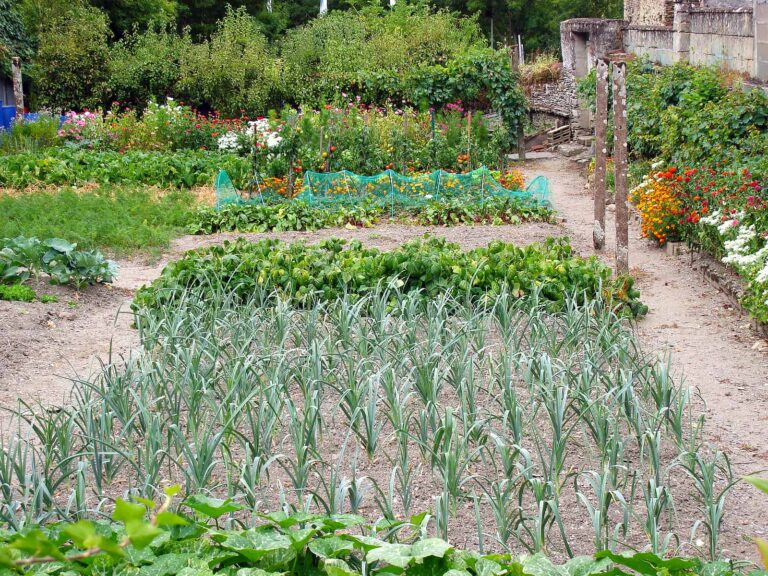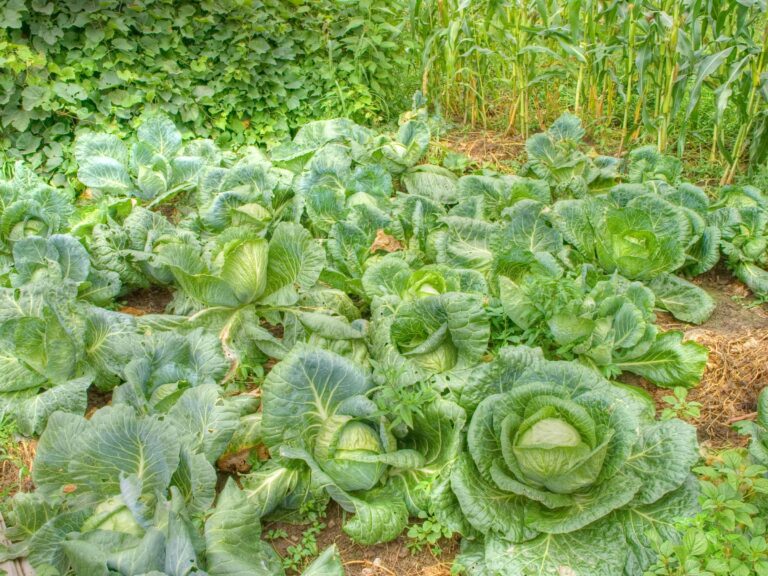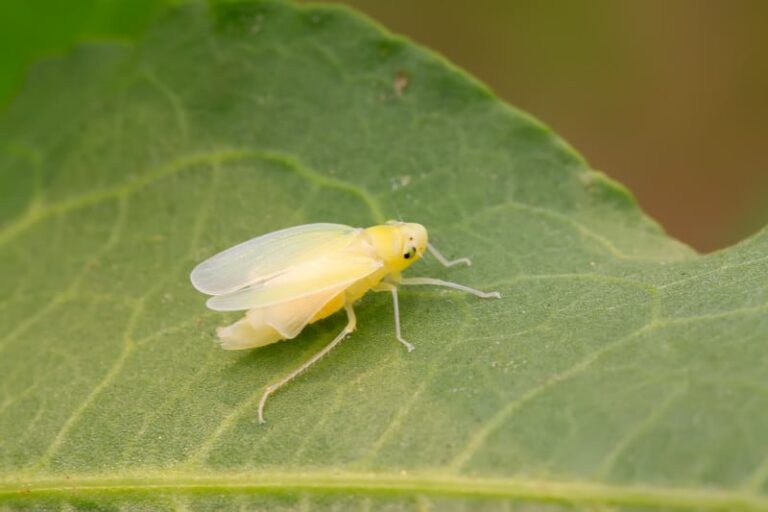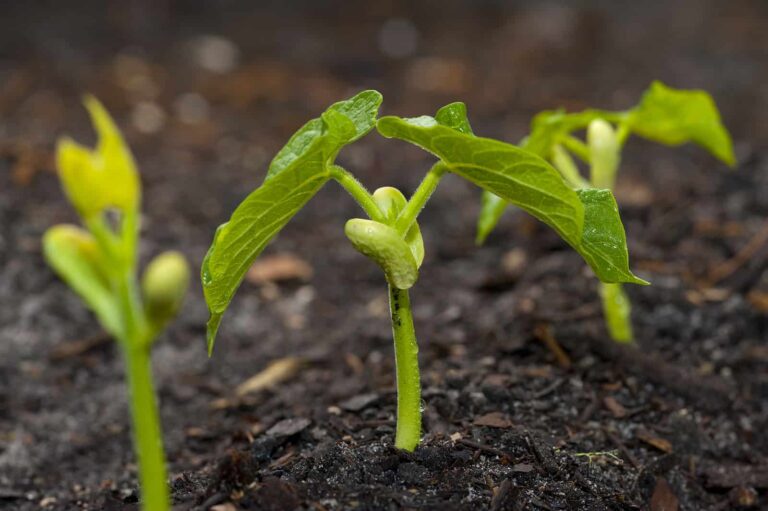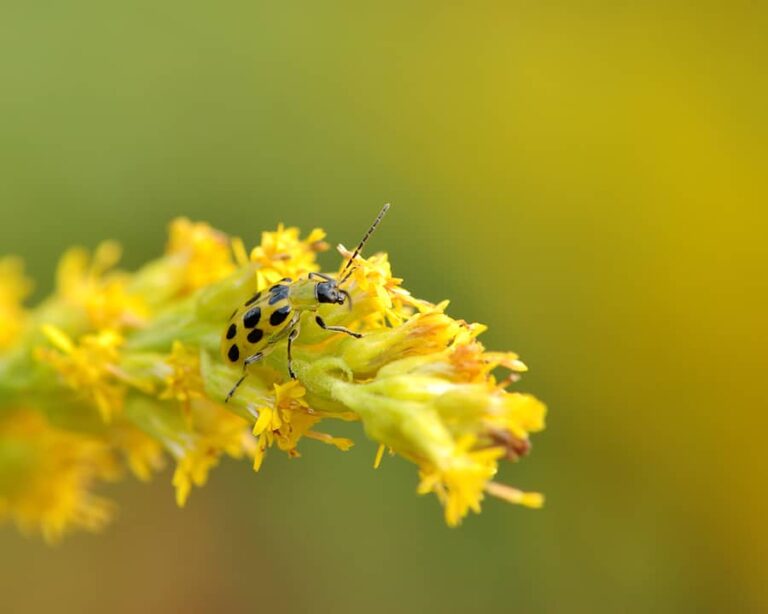Beets and Swiss Chard Growing Problems: Troubleshooting
Beets grow best in cool weather.
For best fresh eating, harvest beats when they are half grown–about six weeks after sowing. Beets will still be good eating when grown to full size.
Thinning beets is important: thin first when roots begin to thicken–the tops will be young and tender and can be served fresh in salads. Keep an eye on maturing roots and thin once more to make sure beets don’t grow crowded; crowded beets will not be flavorful.
Swiss chard–chard–is a close relative of the beet. Chard shares many of the growing techniques of beets, and many of the same pest and disease problems.
Common beet and chard growing problems:
Seed and seedling problems
Seedlings fail to emerge
Temperatures were too high when beets were planted; seeds fail to germinate in hot weather. Mulch planting bed with aged compost. Keep the planting bed evenly moist until seedlings emerge.
Seeds rot or seedlings collapse with dark water-soaked stems as soon as they appear
Damping off is a fungus that lives in the soil, particularly where humidity is high. Do not plant in cold, moist soil. Make sure the soil is well drained.
Seedlings are eaten or cut off near the soil level
Cutworms are gray grubs ½- to ¾-inch long that can be found curled under the soil. They chew stems, roots, and leaves. Place a 3-inch paper collar around the stem of the plant. Keep the garden free of weeds; sprinkle wood ash around the base of plants.
Leaf problems
Leaves curl under are deformed and yellowish; shiny specks on leaves
Aphids are tiny, oval, and yellowish to greenish pear-shaped insects that colonize the undersides of leaves. They leave behind sticky excrement called honeydew which can turn into a black sooty mold. Use insecticidal soap.
Tiny shot-holes in the leaves of seedlings
Flea beetles are tiny bronze or black beetles a sixteenth of an inch long. They eat small holes in the leaves of seedlings and small transplants. The larvae feed on the roots of germinating plants. Spread diatomaceous earth around seedlings. Cultivate often to disrupt the life cycle. Keep the garden clean. Dust with Sevin or rotenone.
Irregular small holes eaten in leaves
Cabbage looper is a light green caterpillar with yellow stripes running down the back; it loops as it walks. Keep the garden clean of debris where adult brownish night-flying moths can lay eggs. Cover plants with spun polyester to exclude moths. Pick loppers off by hand. Use Bacillus thuringiensis. Dust with Sevin or rotenone.
Leaves are eaten; plants are partially defoliated
Blister beetles eat leaves. Handpick insects and destroy them. Keep the garden free of weeds and debris. Cultivate in spring to kill larvae and interrupt the life cycle. Pick off beetles by hand. Spray or dust with Sevin or use a pyrethrum or rotenone spray.
Leaves partially eaten; leaves webbed together; eggs in rows on undersides of leaves
Beet or garden webworms are green with a light stripe of ¾ inches long; the webworm is the larvae of a brownish-yellow moth with gray markings. Larvae spin light webs. Clip off and destroy webbed leaves. Destroy caterpillars. Keep garden weed free.
Leaves and stems are partially defoliated.
Armyworms or grasshoppers. Armyworms are dark green caterpillars the larvae of a mottled gray moth with a wingspan of 1½ inches. Armyworms mass and eat leaves stems, and roots of many crops. Armyworms will live inside webs on leaves. Handpick caterpillars and destroy them. Grasshoppers are brown, reddish-yellow, or green with long bodies, prominent jaws, and enlarged hind legs. Trap in quart jars filled with 1 part molasses and 9 parts water set in the garden at soil level. Cultivate in the fall to disturb the life cycle. Spray with Sevin, rotenone.
Trails of silver slime on leaves; leaves eaten
Snails and slugs feed on leaves. Reduce hiding places by keeping the garden free of debris. Handpick from underboards set in the garden as shelter traps. Use a shallow dish of beer with the lip at ground level to attract and drown snails and slugs.
Trails and tunnels in leaves
The leafminer larvae tunnel inside leaves. Destroy infected leaves and cultivate the garden to destroy larvae and keep adult flies from laying eggs. Cover crops with floating row covers or cheesecloth.
Mottled light and dark green patterns on leaves; leaves are distorted and may become brittle and easily broken; plants are stunted. Mosaic virus has no cure; it is spread from plant to plant by aphids and leafhoppers. Remove diseased plants; there is no cure for the disease. Remove broadleaf weeds that serve as virus reservoirs.
Twisted, brittle stalks; plants yellowed and stunted
Aster yellows is a mycoplasma disease spread by leafhoppers. Remove infected plants. Control leafhoppers. Keep the garden free of weeds which can harbor disease.
Leaf veins turn purple and leaves curl or pucker upward; plants are stunted.
Curly top virus is spread by leafhoppers. The leaves will become thick and leathery or brittle and the plant stops growing. Once the virus hits remove and destroy infected plants. Control leafhoppers.
Irregular yellowish to brownish spots on upper leaf surfaces; grayish powder or moldy fuzz on undersides; roots may later be rough or cracked.
Downy mildew is caused by a fungus. Improve air circulation. Plant disease-resistant varieties. Rotate crops. Keep the garden free of weeds and plant debris.
Small round spots with tan-brown centers on leaves, margins are purple; spots may drop out leaving ragged holes.
Cercospora leaf spot is a fungal disease common where rainfall is heavy and temperatures are warm. Pick off and destroy affected leaves. Keep weeds down in the garden area; they harbor fungal spores. Avoid overhead watering.
Leaves turn red
Leaves can turn from green to red when temperatures dip to freezing. This is not harmful to beets. Some varieties have naturally red leaves.
Whole plant problems
Grubs feed on roots; the plant is stunted
Grayish white grub is the larvae of the June beetle, a reddish brown or black hard-shelled beetle to 1 inch long. Keep the garden clean and free of debris where beetles can shelter. Use rotenone spray or dust to control beetles.
Leaf margins are reddish; leaf tips die; leaves become crinkled; corky black spots in roots or roots cracked.
Boron deficiency. Test soil. If deficient, add 2 ounces of borax per 30 square yards. Boron deficiency is found in soil that is either too alkaline or too acidic. Test soil. Maintain pH between 6.0 and 7.0.
Root problems
Cracked roots
Inadequate watering. Keep soil evenly moist. Also, see boron deficiency.
Misshapen roots
Overcrowding; lumpy heavy clay soil. Thin beets early. Add aged compost and organic material to the planting bed and keep the soil loose. Remove clods and rocks.
Hard, woody roots
Roots are over-mature; harvest just before full days to maturity. Soil may have gone dry; keep soil evenly moist. Do not leaves beets in the ground if the weather turns very warm. Warm weather can cause beets to form hairy side roots.
Scabby or corky roots
Scab bacterium or fungus. This problem is not discovered until harvest. Keep the garden clean of plant debris. Add aged compost to planting beds and keep the soil well drained. Rotate crops.
White rings inside roots
Drought or heavy rains following extended hot weather. Soil dries and then is wet. The flavor will be affected–strong tasting. Keep soil as evenly moist as possible; do not allow the soil to dry out after watering or rains.
Plants flower
Beets are biennials; overwintered plants will naturally flower in spring. Young plants exposed to temperatures below 50°F may also be tricked by the weather into thinking they are in their second season and may flower prematurely. Lift roots if plants begin to flower.
Beet and chard growing success tips
Planting
Grow beets and chard in full sun; beets for greens can be grown in partial shade. Beets and chard grow best in loose, well-drained soil; add aged compost to the planting beds and keep beds free of clods, stones, and plant debris.
Planting time
Beets and chard grow best as cool-season crops. Sow beets and chard in the garden as early as 4 weeks before the last average frost date in spring. Succession crops can be planted every 2 to 3 weeks for a continuous harvest. In warm-summer regions, do not plant beets and chard from mid-spring through mid-summer. Sow beets and chard for fall harvest about 8 weeks before the average first frost date in fall. In mild-winter regions, beets and chard can be sown until late autumn and can be left in the ground for harvest through the winter.
Care
For best root development, thin beets to about 2 inches apart. Beet seedlings emerge in clusters; when the first true leaves form, thin with small scissors leaving the strongest seedling in each cluster. Keep planting beds free of weeds; weeds will rob beets of nutrients, moisture, and flavor. Keep beets and chard evenly moist for quick growth and the best flavor.
Harvest
Beets for greens can be cut early when the leaves are young and tender. The same goes for chard. Young beetroots can be harvested about 6 weeks after sowing. Wait a bit longer for larger roots. Beets and chard that mature in hot weather will be poorly flavored. Lift spring beets before daytime temperatures average greater than 70°F. Start the fall harvest when daytime temperatures are consistently in the 50s.
Beets Growing Hub
Start here: Ultimate Guide to Growing Beets from Seed to Harvest
1. Getting Started (Timing, Planting, Varieties)
- When to Plant Beets: Timing by Season and Region
- Beets Seed Starting Tips
- Thinning and Spacing Beets for Better Roots
- Beet Varieties for Small Spaces and Containers
- Best Beet Varieties for Sweet Flavor and Tender Texture
2. Growing & Care
- Best Companion Plants for Beets (And What to Avoid)
- How to Fertilize Beets for Root and Leaf Growth
- How Much Water Do Beets Need? A Watering Guide
- How to Grow Beets in Raised Beds and Containers
- Growing Beets in Hot Weather: Challenges and Solutions
- Succession Planting Beets for a Continuous Harvest
3. Problems & Troubleshooting
- Why Are My Beets Not Forming Roots? Common Growing Problems Solved
- Beets and Swiss Chard Growing Problems: Troubleshooting
4. Harvest, Storage & Kitchen Use
- How and When to Harvest Beets for Best Flavor
- How to Harvest and Store Beets
- Seven Ways to Cook and Serve Beets
🌿 Swiss Chard Learning Hub
Start here: The Ultimate Chard Growing Guide: From Seed to Harvest
✅ Planting & Seasonal Timing
- Swiss Chard Seed Starting Tips
- How to Grow Swiss Chard Year-Round in Mild Climates
- When to Plant Swiss Chard for Spring, Summer, and Fall Harvests
- Succession Planting Swiss Chard for Continuous Harvests
- Growing Swiss Chard in Containers
✅ Growing Techniques
✅ Care & Maintenance
- Watering Swiss Chard: How Much and How Often
- Why Is My Swiss Chard Wilting? Common Growing Problems and Fixes
- How to Keep Swiss Chard From Getting Bitter
✅ Pests & Diseases
✅ Harvesting & Use
- How to Harvest and Store Swiss Chard
- Five Ways to Cook Swiss Chard
- How to Harvest Swiss Chard So It Keeps Growing
✅ Varieties & Selection
- Best Swiss Chard Varieties for Colorful Garden Beds
- Top Swiss Chard Varieties for Small-Space Gardens and Containers
✅ Companion Planting & Rotation
Crop Rotation Tips for Swiss Chard: What to Plant Before and AfterMore tips:
What to Plant With Swiss Chard (And What to Avoid)
Beets articles at Harvest to Table:
How to Harvest and Store Beets
Beets and Swiss Chard Growing Problems: Troubleshooting
Seven Ways to Cook and Serve Beets
Baby Beets, Baby Carrots, and Sugar Snap Peas Salad
Baby Beets: Steamed, Baked, Pickled
Garden Planning Books at Amazon:


